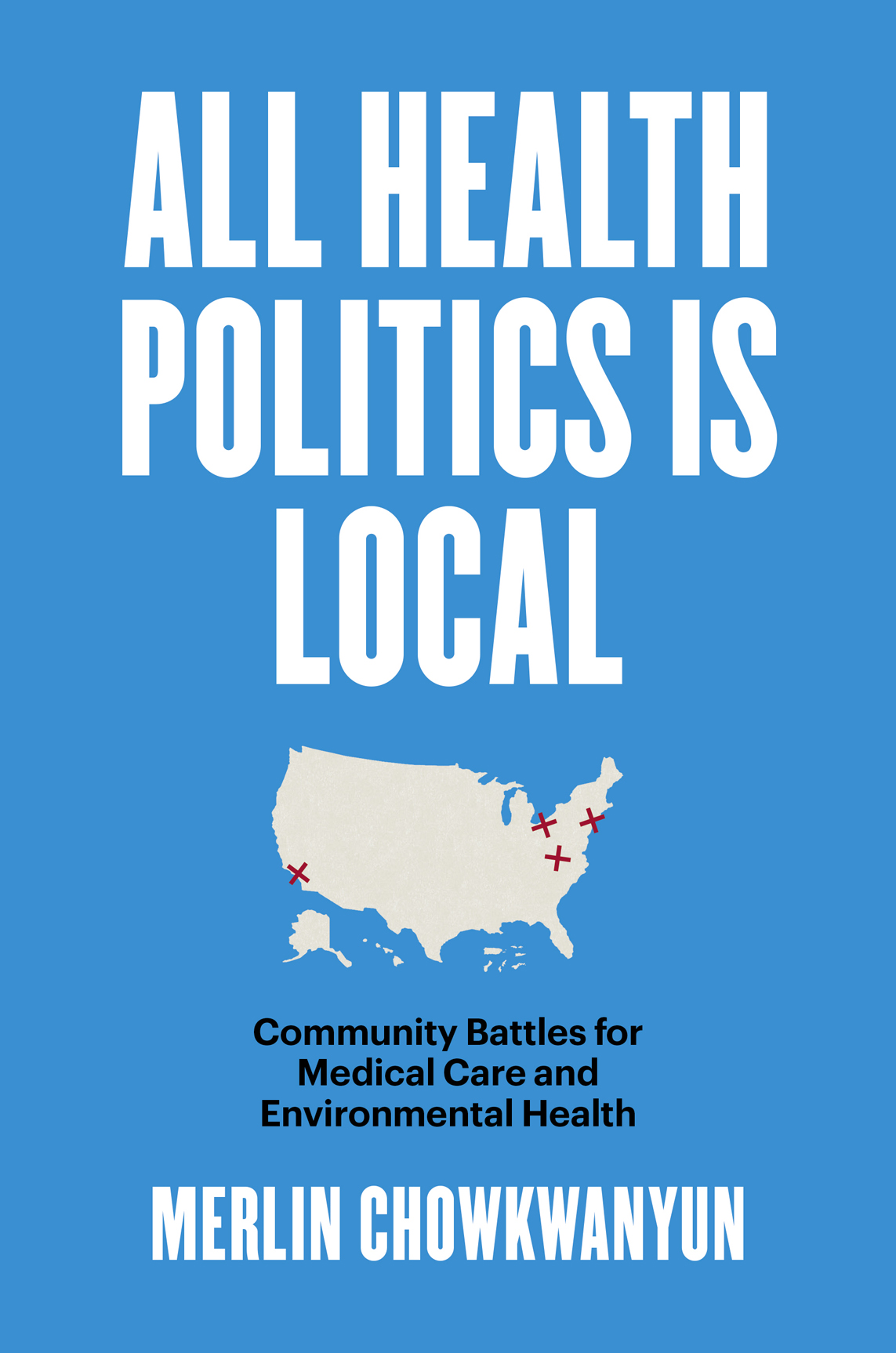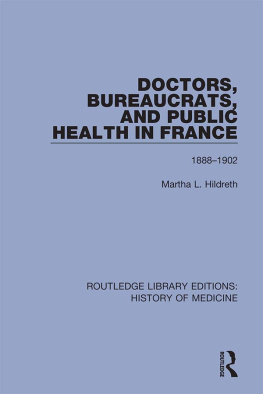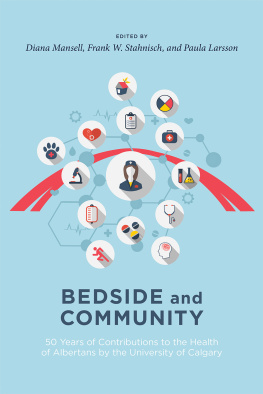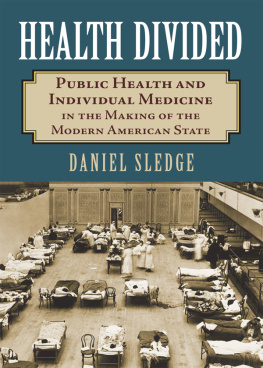
All Health Politics Is Local
Studies in Social Medicine
Allan M. Brandt, Larry R. Churchill, and Jonathan Oberlander, editors
This series publishes books at the intersection of medicine, health, and society that further our understanding of how medicine and society shape one another historically, politically, and ethically. The series is grounded in the convictions that medicine is a social science, that medicine is humanistic and cultural as well as biological, and that it should be studied as a social, political, ethical, and economic force.
This book was published with the assistance of the
Lilian R. Furst Fund of the University of North Carolina Press.
2022 Merlin Chowkwanyun
All rights reserved
Designed by Jamison Cockerham
Set in Arno, Scala Sans, and Futura Now
by codeMantra
Manufactured in the United States of America
The University of North Carolina Press has been a member
of the Green Press Initiative since 2003.
LIBRARY OF CONGRESS CATALOGING-IN-PUBLICATION DATA
Names: Chowkwanyun, Merlin, author.
Title: All health politics is local : community battles for medical care and environmental health / Merlin Chowkwanyun.
Other titles: Studies in social medicine.
Description: Chapel Hill : The University of North Carolina Press, 2022. | Series: Studies in social medicine | Includes bibliographical references and index.
Identifiers: LCCN 2021059032 | ISBN 9781469667669 (cloth ; alk. paper) | ISBN 9781469667676 (paper ; alk. paper) | ISBN 9781469667683 (ebook)
Subjects: LCSH: Medical carePolitical aspectsUnited States. | Environmental healthPolitical aspectsUnited States. | Community health servicesUnited States.
Classification: LCC RA395.A3 C492 2022 | DDC 362.10973dc23/eng/20211220
LC record available at https://lccn.loc.gov/2021059032
For
HERBERT J. GANS
sociological legend
teacher
friend
Contents
Illustrations
FIGURES
Piel Commission flow chart of New York City bureaucracy and the fractitionation of authority
Lower East Side Neighborhood Health CouncilSouth outreach poster
Smog formation in Los Angeles
Network of Los Angeles weather stations
Simplified rendition of Arie Haagen-Smits schematic of smog formation
Warning: The Death Fog Is Coming pamphlet
Membership Determining Funnel for Community Health Council
Community Health Foundation recruitment pamphlet
Local coverage of strip mine mudslides
Citizens to Abolish Strip Mining pamphlet
Pictures of local flooding
Our Hottest Client (reprint)
The Invisible Power of Coal (advertisement)
Conveying maldistribution
Leaflet distributed in Floyd County on Comprehensive Health Services program
Eula Hall and Leon Cooper meeting
Maps
One-mile buffer around Montefiore
Two-mile buffer around Montefiore
Bronx hospital closures in the 1970s
1960 census tracts with 75%+ Black populations before/after new Watts Health Service Area
1970 census tracts with double-digit poverty percentage before/after new Watts Health Service Area
City Hospital and Community Health Foundation sites
Segregation in East Cleveland and locations of Cleveland Clinic and Western Reserve in University Circle/Hough area
University-Euclid Urban Renewal Project, Phase II
Two Hough-Norwood facilities and the Kenneth Clement Center
Historical geography of eastern Kentucky strip mining, 1955
Historical geography of eastern Kentucky strip mining, 1975
Regional poverty prevalence distribution, Central Appalachia
National poverty prevalence distribution
Tables
3.1 Watts First Community Health Councils demographic composition
3.2 Admissions-to-staff ratios at LACUSC versus other major California county hospitals
3.3 Interdepartmental variation in occupancy by median percentage
Graph
National coal extraction by method, 195575
All Health Politics Is Local
Introduction
Localism and the Ordeal of Community Health
In the mid-1980s, the very consequential career of a then anonymous college graduate was just beginning. Frustrated with the ennui of an office life conducting market researchand sensing he had a much larger impact to makehe scoured for an alternative life trajectory. In a periodical called Community Jobs, he found something promising enough: an ad seeking somebody whod supervise all organizing in an area which is 95 percent black. If he took the job, hed recruit and train lay leaders and use public action skills for the good of struggling neighborhood residents. The graduate applied, the civic potential of the job making up for the 50 percent salary cut. And when he learned that he got it, he quickly acquired an old, beat up Honda Civic, put most of his lifes belongings into it, and drove away, from New York City, through Pennsylvania and Ohio, headed to another metropolis in the Midwest.
On his arrival, a cluster of long-standing neighborhood organizations took in the young graduate and threw him into training: crash courses in the art of one-on-one persuasion and of corralling often disparate groups of people toward achieving common goals. The work sometimes meant going neighborhood to neighborhood ascertaining residents complaints about inadequate trash pickup or persuading enough people to show up at a local government agency to express discontent.
The graduates mentors came out of a tradition only a degree removed from the 1960s. Reared in the philosophies of community organizing guru Saul Alinskys Industrial Areas Foundation (IAF), they put their faith in knowing ones environs intimately, then embracing the grit and grind of arduous local-level, block-by-block work. They sensed that their new mentee was a quick study with natural talent, and they put him right to work on several campaigns: removing asbestos in public housing; creating better job training programs for city youth; and fighting garbage disposal companies who located dumps in racially segregated and economically depressed areas. Reflecting on it years later, hed recall that local organizing of the sort he did teaches as nothing else does the beauty and strength of everyday people and their capacities to shape an articulable agenda for community change.
The young graduate-turned-organizer, of course, was none other than Barack Obama, whod become the forty-fourth president of the United States twenty-five years after he started out in Chicago. Those early days became the leitmotiv of his historic 2008 presidential campaign, whose anchoring theme was local community organizing for national political change. Long before he became Number 44, Obama was attuned to the adage, popularized by Democratic Party titan and Speaker of the House Tip ONeill, that all politics is local. By that, ONeill meant that the micro trickled up and influenced the macro just as much, if not more, than the other way around. ONeill would know, having witnessed firsthand the dynamics of American federalism in his three decades in Congress, spanning the mid-1950s to the mid-1980s, and having lived through epoch-making shifts in civil rights, party realignment, labor politics, and the welfare state.
For historians, all health politics is local has become a guiding analytic light. The historian Thomas Sugrue has elaborated on ONeills insight, arguing that the persistence of local government autonomy, even amidst the expansion of national government power, has had profound social consequences.
Next page






